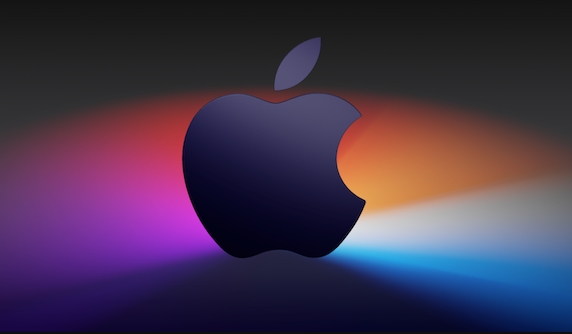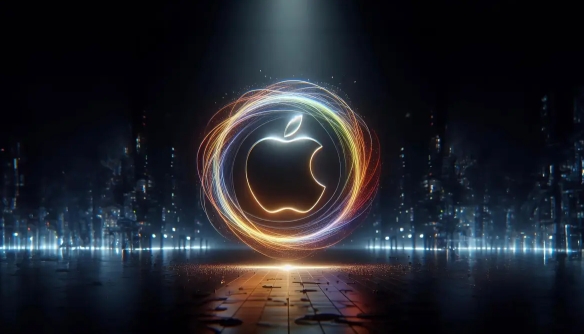Being stuck in Apple logo is usually caused by hardware problems, boot disk exceptions, or system cache errors. Solutions include: 1. Unplug the peripherals and check whether the boot disk is normal; 2. Clean or replace the memory stick to detect the health of the hard disk; 3. Try to start in safe mode or recovery mode; 4. Reset NVRAM/PRAM and SMC, clean cache files; 5. Use terminal commands to repair the disk or rebuild the boot partition in recovery mode; 6. If the above method is invalid, it may be hardware aging or firmware damage, and the device needs to be repaired or replaced.

Installing macOS stuck in Apple Logo is a problem that many users will encounter, especially when upgrading the system or reinstalling it. This may occur on different models of Macs, and there are many reasons. The following are some common troubleshooting directions and solutions.

Check hardware connections and status
Many times, installation lag is not a system problem, but an exception caused by hardware. Especially when using external hard drives, USB drives or monitors:

- Unplug non-essential peripherals : including USB drives, printers, external keyboards and mice, etc., and only necessary keyboards and mice are retained.
- Check whether the boot disk is normal : If you are using a homemade installation USB disk, there may be an error during the production process. You can try to remake it once with other tools such as BalenaEtcher or official methods.
- Memory problem : If your Mac supports disassembling the memory stick, try cleaning or replacing the memory stick. Memory failure may cause the system to fail to load properly.
- Hard disk health status : If it is an old machine, problems with the hard disk will also affect the installation process. You can use third-party tools to detect whether there are bad channels in the disk.
Try to enter safe mode or recovery mode
Sometimes the system just needs to start in a different way to bypass certain conflicts:
-
Safe Mode :

- Intel Mac: Hold down the Shift key during restart until you see the login interface
- Apple Silicon Mac: Turn off the power first → Press and hold the power key until “Loading boot options” appears → Press and hold the power key again after release → Click “Option Shift” to start after the options appear
- The system will load the minimum resources in safe mode, which helps determine whether it is caused by drivers or software conflicts.
-
Recovery Mode :
- Intel Mac: Press Command R when powering on
- Apple Silicon Mac: Press and hold the power button directly until the "Options" interface appears, and then select "Recover"
- In recovery mode, you can try reinstalling macOS, repairing disks, resetting NVRAM, etc.
Clean up cache and reset the system management controller
Sometimes cache files or system settings errors can also cause installation failure:
-
Reset NVRAM/PRAM :
- Intel Mac: Press Option Command PR immediately when powering on for about 20 seconds
- Apple Silicon Mac: This step does not apply, but restarting multiple times can sometimes achieve similar results
-
Reset SMC (System Management Controller) :
- For Intel Macs with T2 chips, you can do
csrutil clearin recovery mode and restart - Apple Silicon devices such as M1/M2 do not need to manually reset the SMC, usually restart
- For Intel Macs with T2 chips, you can do
-
Delete cached files :
- After entering recovery mode, mount the disk and go to
/Library/Cachesto delete the content (note that it is not the caches in the user directory)
- After entering recovery mode, mount the disk and go to
Use terminal commands to repair disk or rebuild boot partition
If you can enter recovery mode, you can use the terminal to do some more in-depth operations:
-
Verify and repair the disk :
diskutil verifyDisk / diskutil repairDisk /
Rebuild the Preboot partition (suitable for situations where it cannot boot properly):
rm -rf /Volumes/your_disk_name/System/Library/PrelinkedKernels touch /Volumes/your_disk_name/System/Library/PrelinkedKernels/.purgeatboot
Rebuild the startup configuration :
sudo touch /.purgeBootCache sudo bless --mount /Volumes/your_disk_name --setBoot
These operations are risky, and it is recommended to confirm that you understand the role of each step before performing it.
Basically these common ways of handling it. In some cases, it may be caused by hardware aging or firmware damage, so you can only send repairs or replacement equipment. However, most of the time, the above method can be solved.
The above is the detailed content of macOS installation freezes on the Apple logo. For more information, please follow other related articles on the PHP Chinese website!

Hot AI Tools

Undress AI Tool
Undress images for free

Undresser.AI Undress
AI-powered app for creating realistic nude photos

AI Clothes Remover
Online AI tool for removing clothes from photos.

Clothoff.io
AI clothes remover

Video Face Swap
Swap faces in any video effortlessly with our completely free AI face swap tool!

Hot Article

Hot Tools

Notepad++7.3.1
Easy-to-use and free code editor

SublimeText3 Chinese version
Chinese version, very easy to use

Zend Studio 13.0.1
Powerful PHP integrated development environment

Dreamweaver CS6
Visual web development tools

SublimeText3 Mac version
God-level code editing software (SublimeText3)
 This copy of the Install macOS application is damaged
Jul 06, 2025 am 12:26 AM
This copy of the Install macOS application is damaged
Jul 06, 2025 am 12:26 AM
The "InstallmacOS is corrupted" prompt is usually caused by security mechanisms rather than file corruption. Common reasons include unofficial download sources, incomplete files, failure to verify signatures in the old system, or misjudgment of Gatekeeper; solutions include: 1. Forced opening of the installer through terminal commands and starting the USB flash drive; 2. Temporarily closing Gatekeeper verification; 3. Remount the installer and delete kernelcache file repair permissions; ways to avoid problems include prioritizing the use of official channels to download, verify the SHA256 value, selecting a trusted third-party site, and avoiding modification of the installation content.
 How to check if Windows is activated and genuine
Jul 09, 2025 am 12:54 AM
How to check if Windows is activated and genuine
Jul 09, 2025 am 12:54 AM
1. Check the activation status in the settings; 2. Use the command prompt to check the activation status; 3. Check whether there are watermarks or restrictions; 4. Verify whether the system is genuine. To confirm whether Windows is genuine and activated, first open "Settings" → "System" → "About" → "Activate" to view the status, and it is normal to display "Windows is activated"; secondly, you can run the commands wmic and slmgr with administrator permissions to view the license details; if the desktop has a "Activate Windows" watermark, it means that it is not activated; finally, use "Windows Specifications" to confirm that the system type is retail or OEM version, and use Microsoft's official tools to verify the authenticity of the system.
 How to install Windows on a second monitor setup
Jul 17, 2025 am 02:42 AM
How to install Windows on a second monitor setup
Jul 17, 2025 am 02:42 AM
Connecting a second monitor when installing a Windows system will not affect the installation process, but the following things need to be paid attention to to ensure that the dual screens work normally: 1. There may be only one screen display during the installation process, and the main display device in the BIOS can be adjusted or the interface can be replaced; 2. After the installation is completed, select the display mode through Win P, and adjust the resolution, position and main display in the display settings; 3. If there is a black screen or unrecognizable situation, check the cable, update the driver or enter safe mode to reinstall the driver; 4. When using monitors with different resolutions, set the appropriate zoom ratio and enable the zoom repair option to optimize the display effect.
 Windows 10 installation stuck on logo
Jul 06, 2025 am 12:01 AM
Windows 10 installation stuck on logo
Jul 06, 2025 am 12:01 AM
When booting the computer and logging in the Windows 10Logo interface is usually not damaged by hardware, but rather an error in system file loading. 1. Wait for 15 to 30 minutes first to confirm whether it is "fake death". If there is no progress, force restart; 2. Force shut down three times to enter the recovery environment, try to start repair or enter safe mode to troubleshoot driver and software conflicts; 3. Check the hard disk bad channel, clean the memory gold fingers and replace the slot to test the hardware problems; 4. Finally, you can try to reset the computer or install the system in a brand new way to solve it, and give priority to using the official website pure ISO mirror.
 How to back up my Mac before a macOS update?
Jul 15, 2025 am 12:33 AM
How to back up my Mac before a macOS update?
Jul 15, 2025 am 12:33 AM
Before updating macOS, you should back up your Mac. 1. Use TimeMachine to make a complete backup, insert the external hard disk and enable automatic regular backup; 2. Manually back up important files to cloud storage or external devices, and give priority to backing up documents, photos, bookmarks and other key information; 3. Create a bootable macOS installation disk for system repair or reinstallation, prepare a 16GB USB disk and run terminal commands to create. Backup can effectively prevent update failure or data loss, and it is more secure to prepare in advance.
 How to install Windows 11 without a Microsoft account
Jul 06, 2025 am 12:54 AM
How to install Windows 11 without a Microsoft account
Jul 06, 2025 am 12:54 AM
Yes, you can install and use Windows 11 without using a Microsoft account. 1. During the installation process, select "I don't have an Internet" or "Settings for Personal Use" and create a local account to skip the Microsoft account; 2. If you have installed it with a Microsoft account, you can switch to a local account in the settings; 3. You can still access all apps and system functions with a local account, but you will lose the functions of automatic synchronization between devices, cloud backup and some Microsoft store applications. Therefore, skipping Microsoft accounts is a feasible and appropriate option for users who focus on privacy or only use basics.
 How to create a macOS bootable installer in Windows?
Jul 13, 2025 am 01:10 AM
How to create a macOS bootable installer in Windows?
Jul 13, 2025 am 01:10 AM
Making a macOS bootable installer on Windows is not officially supported, but can be implemented through third-party tools. First, prepare a USB drive above 16GB, macOS installation image (.dmg/.iso) and tools such as TransMac or balenaEtcher; secondly, use TransMac to right-click the USB drive and select "RestorewithDiskImage" to write the image, or use balenaEtcher to select ISO files and target disk to write; finally note that the USB drive must be in GPT format, and install Hackintosh, you also need to manually configure EFI boot and use boot tools to bypass restrictions.
 Fixing the 'Untrusted_Cert_Title' error during macOS installation
Jul 07, 2025 am 01:06 AM
Fixing the 'Untrusted_Cert_Title' error during macOS installation
Jul 07, 2025 am 01:06 AM
To resolve the "Untrusted_Cert_Title" error, you must first make sure to use the official certified installer and create it correctly. Secondly, check whether the system time settings are accurate, then update the firmware and bootstrap, and finally try to install macOS through the network recovery. The specific steps are: 1. Use the official AppStore installer and create a USB installer through Apple tools such as createinstallmedia to avoid manually copying files or using third-party tools; 2. After entering recovery mode, correct the date and time through terminal commands; 3. Check and update the EFI or firmware of the Mac to confirm that the hardware supports the target macOS version; 4. Long press Option Command R to start the network







